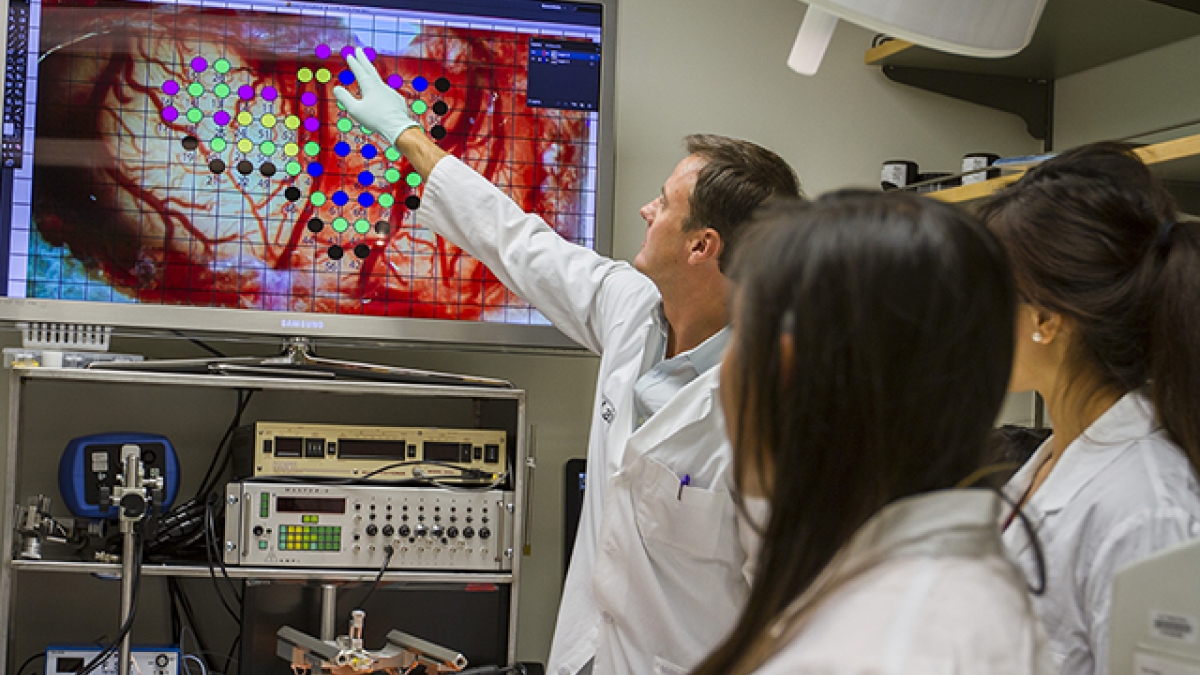ASU neuroscientist gains support for stroke rehab research

His promising work on ways to help the brain heal has brought Arizona State University neuroscientist Jeffrey Kleim support from a leading private medical research company.
Dart NeuroScience recently agreed to provide Kleim $200,000 each year for an indefinite period to contribute to the company’s endeavors to develop pharmacological therapies to maintain human brain health.
Kleim is an associate professor and chair of the undergraduate biomedical engineering program in the School of Biological and Health Systems Engineering, one of ASU’s Ira A. Fulton Schools of Engineering.
His research focuses on neural plasticity, also called brain plasticity, which explores changes in the brain’s synapses and neural pathways resulting from learning, environmental factors and injury.
In his ASU laboratory, Kleim is seeking to find more effective treatments for Parkinson’s disease, stroke and traumatic brain injury – looking at new drugs and electrical and magnetic stimulation of the brain to reverse the impacts of brain disease and injury.
About 800,000 people in the United States suffer a stroke each year, making it the leading cause of adult disability in the nation.
The incidence of stroke increases with age. So as more people live longer, Kleim says, the overall number of stroke patients will increase dramatically in the coming years.
He will work with Dart Neuroscience to test newly designed chemical compounds for their potential effectiveness in helping regain cognitive and physical abilities after strokes.
“When you learn something, the biology of your brain changes in some way. When you memorize a formula, study for an exam or learn new information, the circuitry in your brain is altered to store the memory. There are well-defined biological events that happen to allow learning to occur. Recovery from stroke is really a relearning process using the same biological process,” he explains.
“We actually know a lot about that process and can, therefore, try and use different techniques to amplify it, so that people who have suffered brain injury can regain what has been lost,” he says.
Kleim will design and carry out experiments to test about three to four new drugs a year developed at Dart NeuroScience. He will then compile data from the experiments and review results with the company’s neurologists and clinicians.
Dart NeuroScience’s San Diego facility is the site where most of the company’s $120 million per year in advanced brain research is performed. “We are capable of helping them because of the quality of the biomedical resources here at ASU,” Kleim says.
The funding from Dart NeuroScience will provide opportunities for graduate students, as well as students in summer research programs, to participate in Kleim’s project.
Results of his research will likely be taught in School of Biological and Health Systems Engineering course material that is part of the school’s focus on education in neurorehabilitation.
Kleim has held faculty positions at the Canadian Center for Behavioral Neuroscience at the University of Lethbridge and the Department of Neuroscience and the Brain Rehabilitation Research Center at the University of Florida. He recently completed the book “Neural Plasticity: Foundation For Neurorehabilitation.”
He says he came to ASU in 2011 not only for its research facilities, but also “for the opportunity to work with engineers, because I am convinced their work is going to have the biggest impact on efforts to solve neurological problems.”

